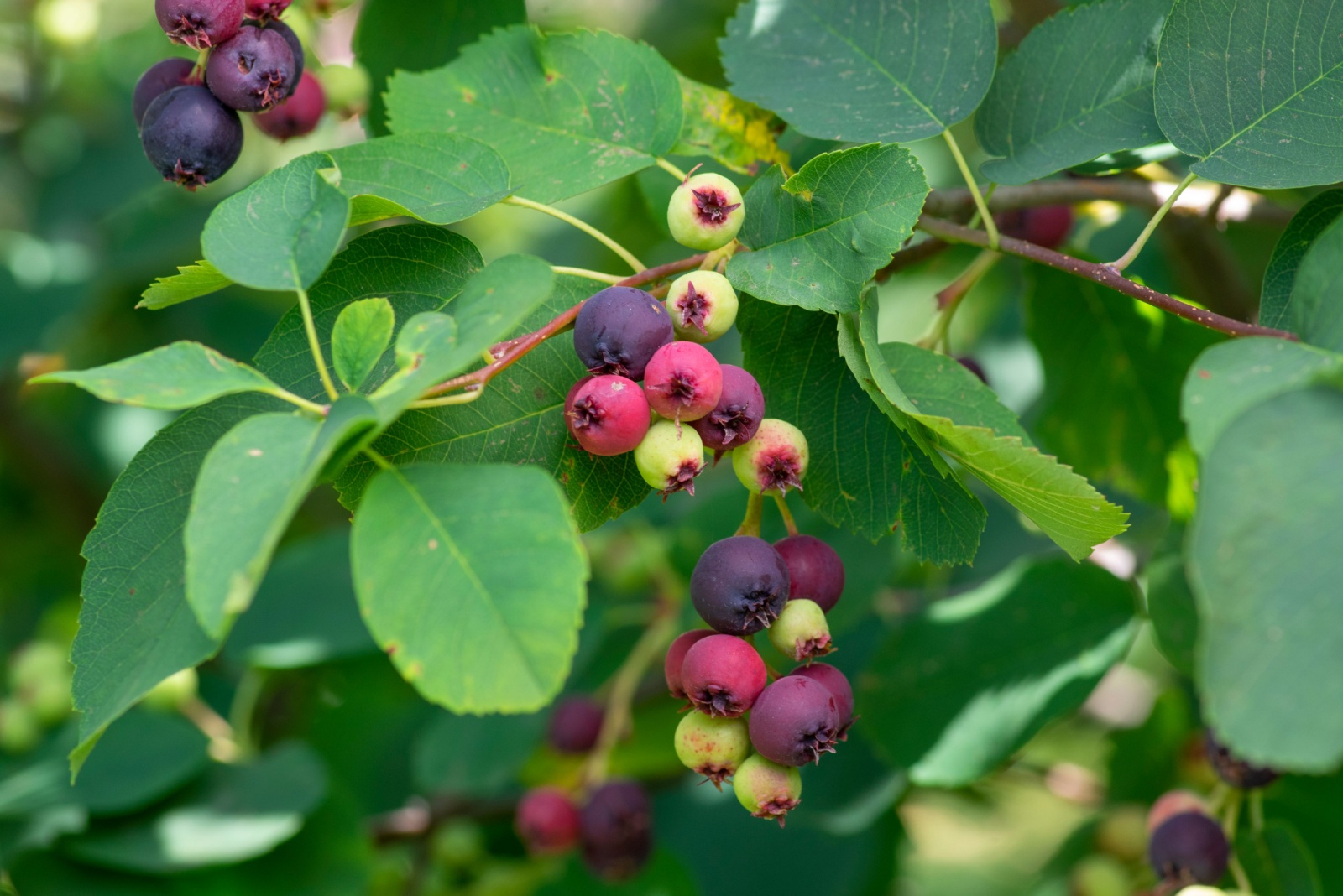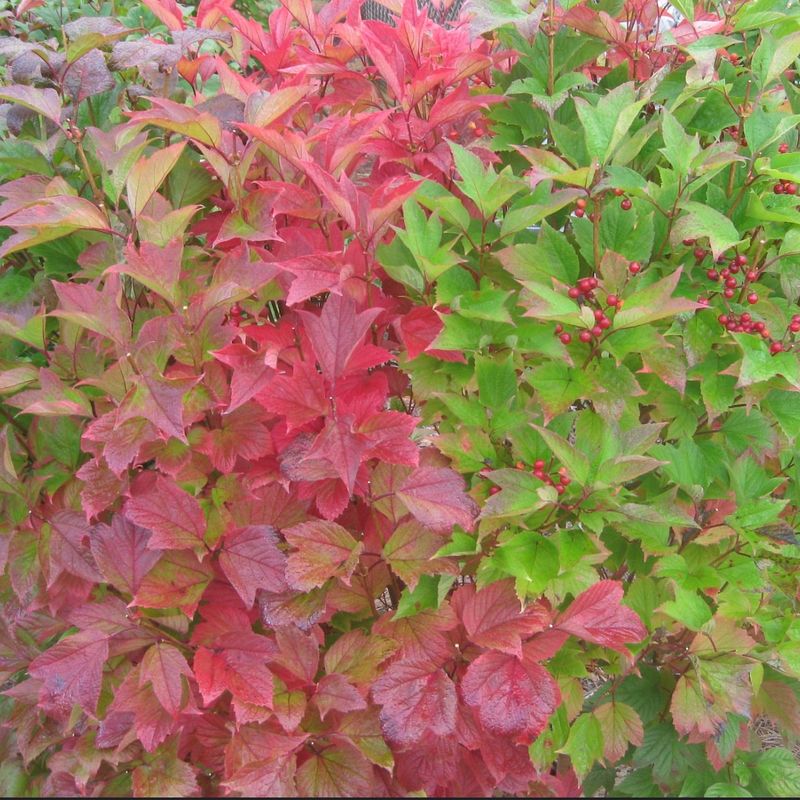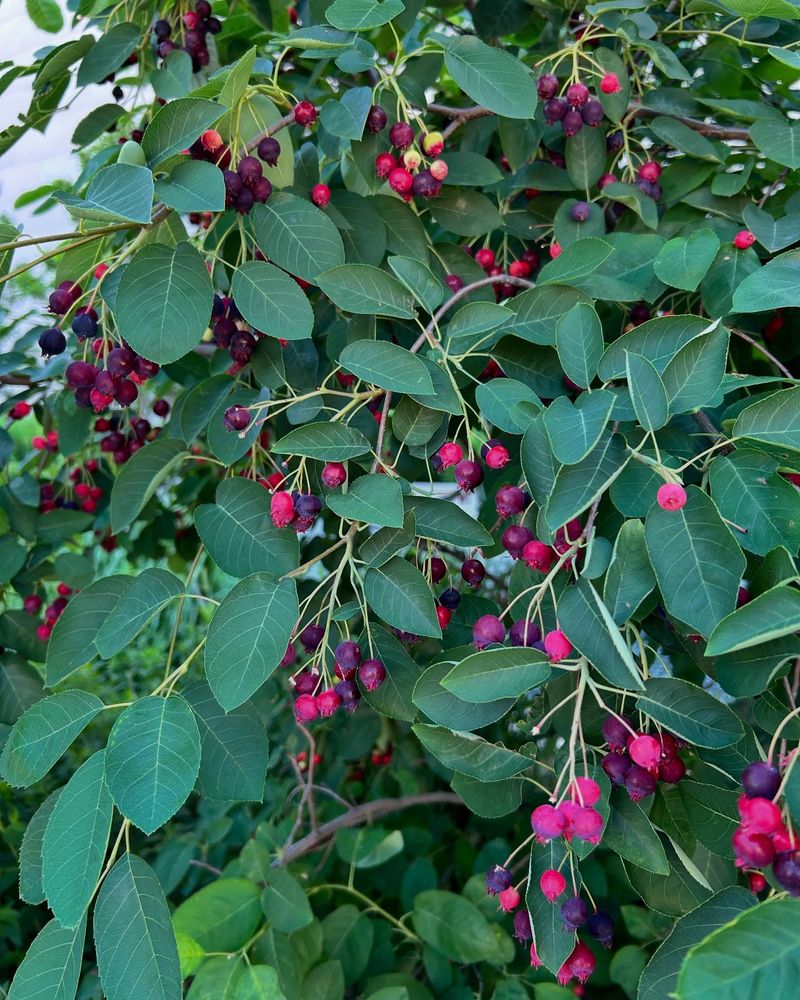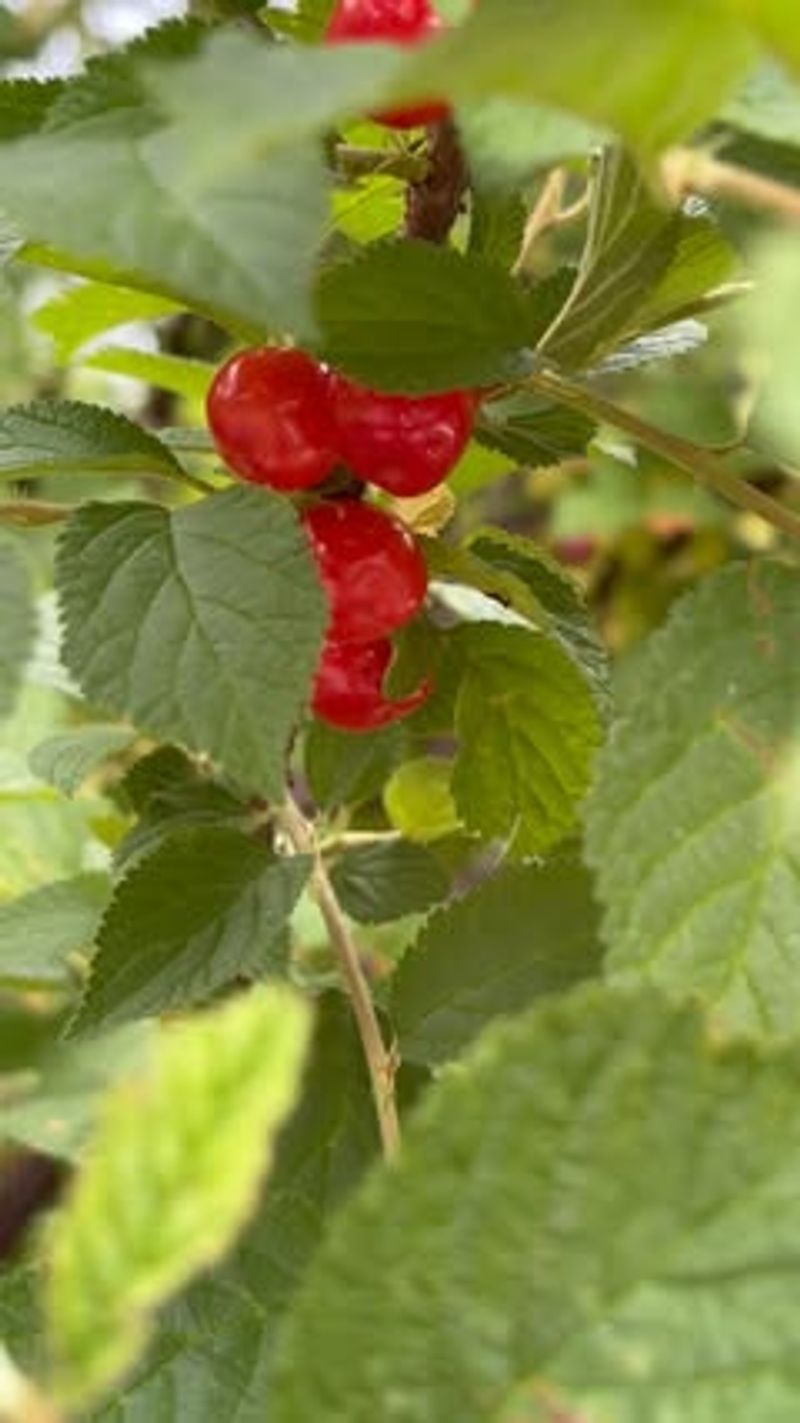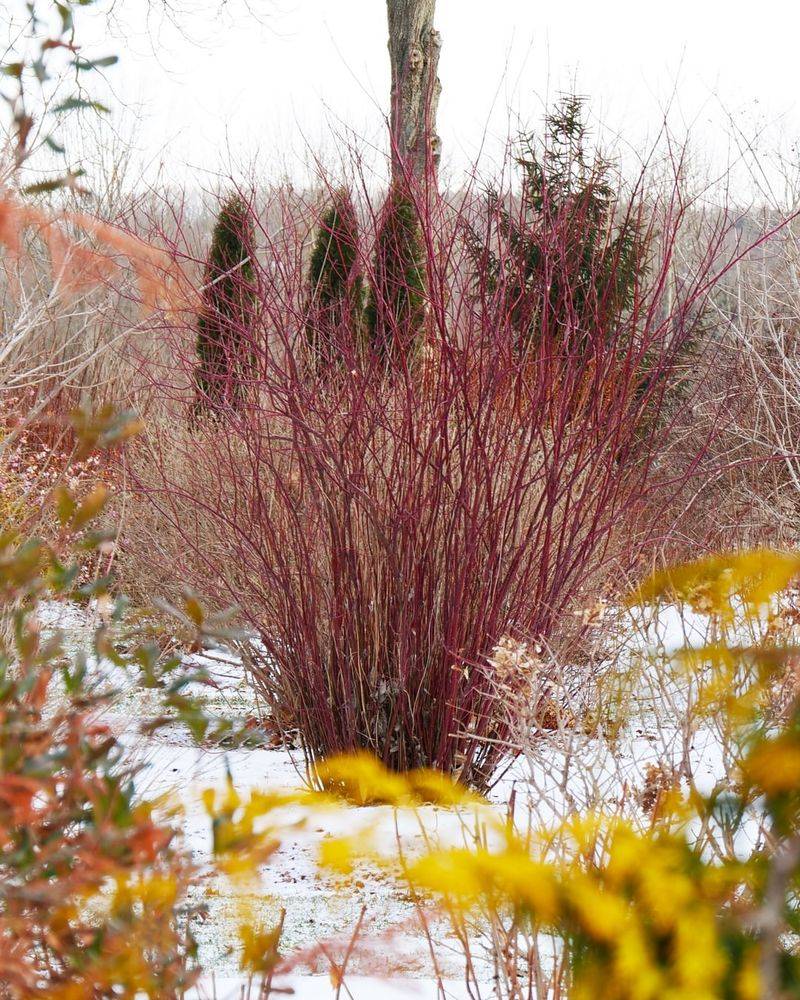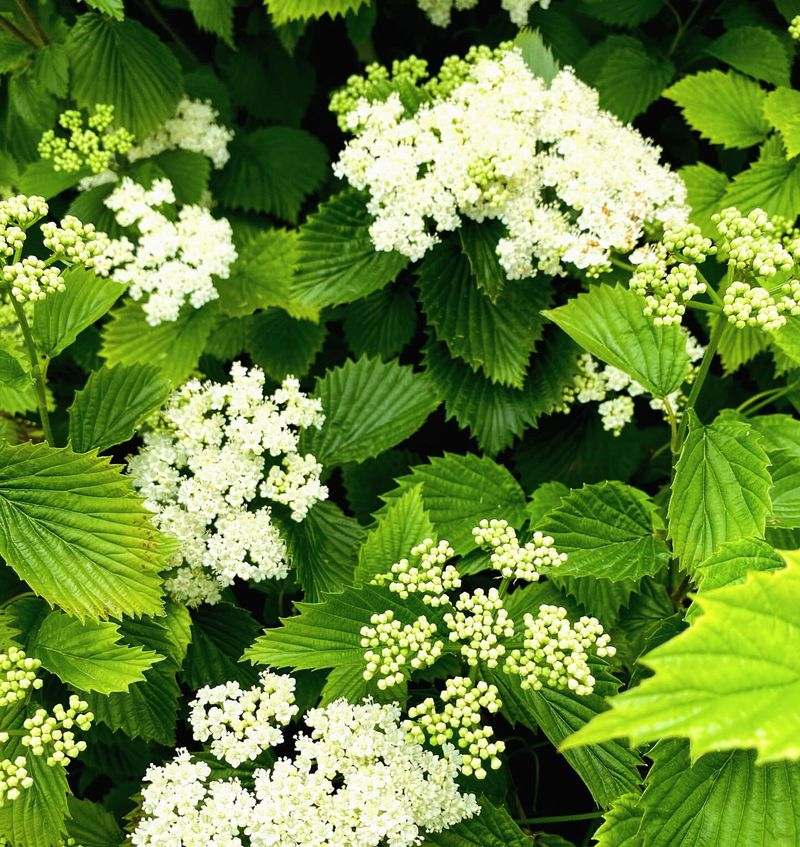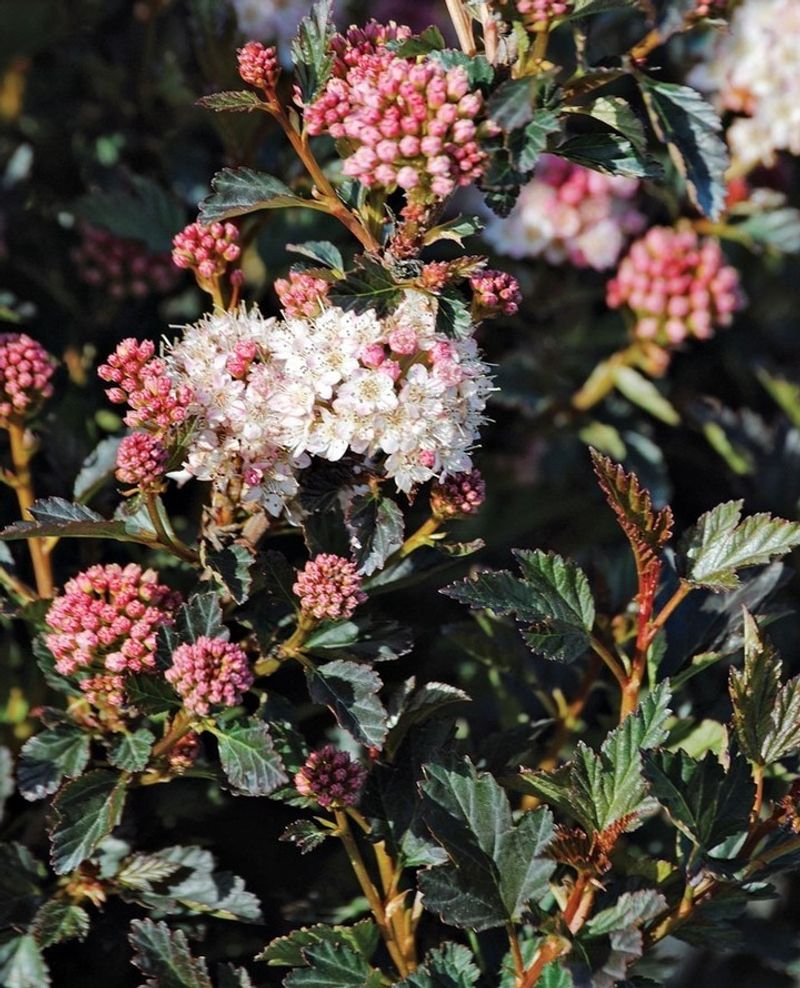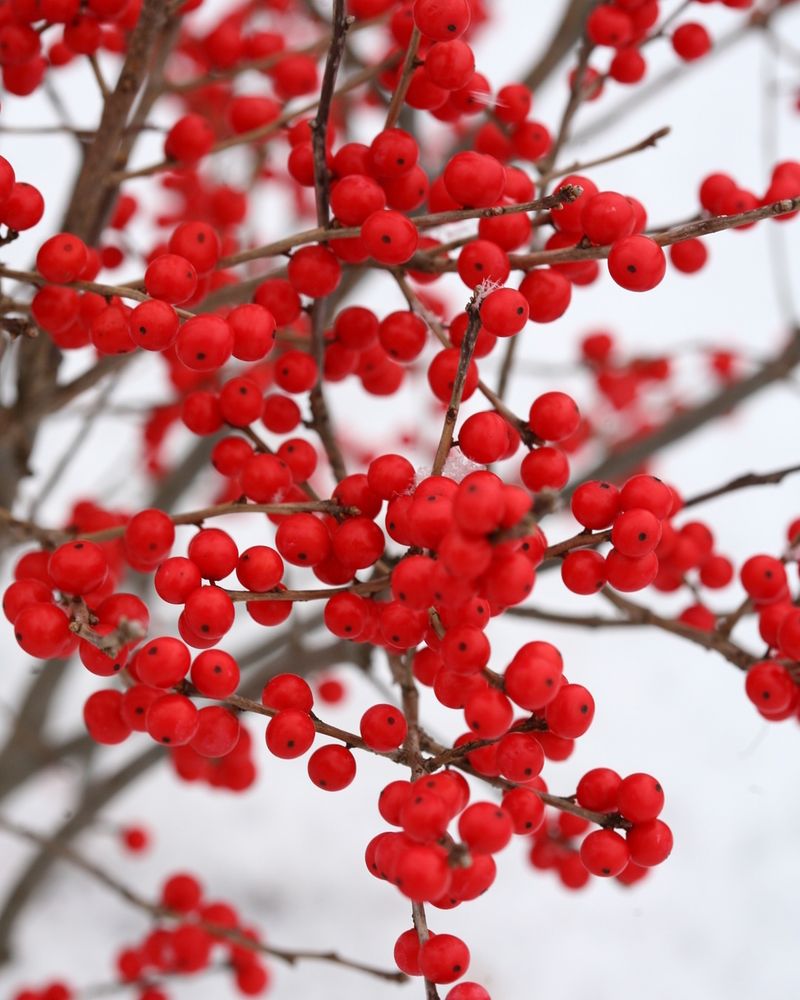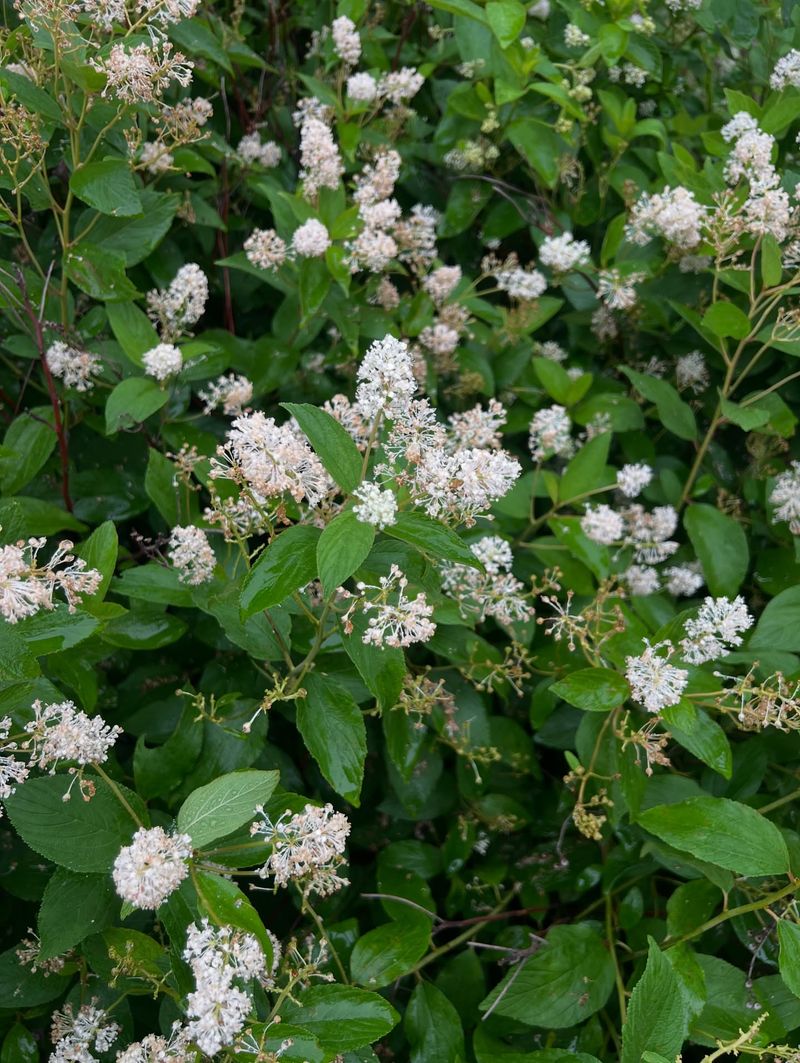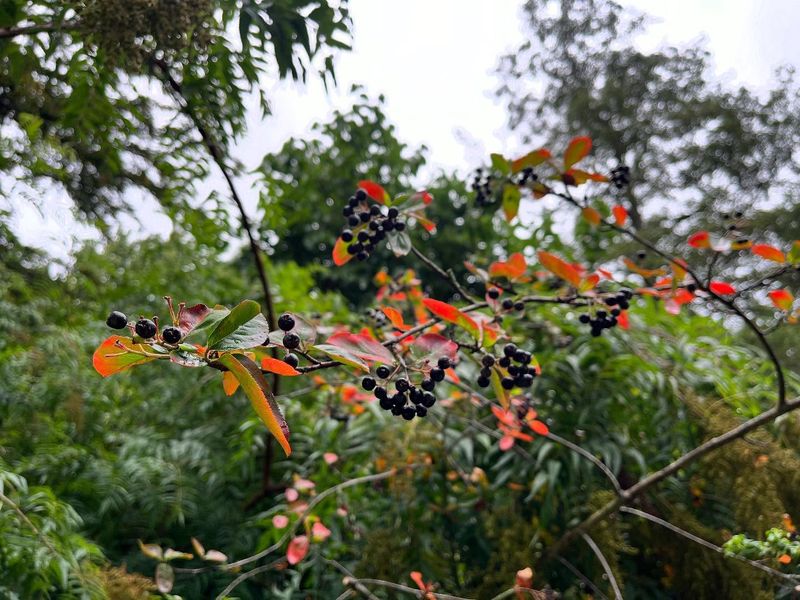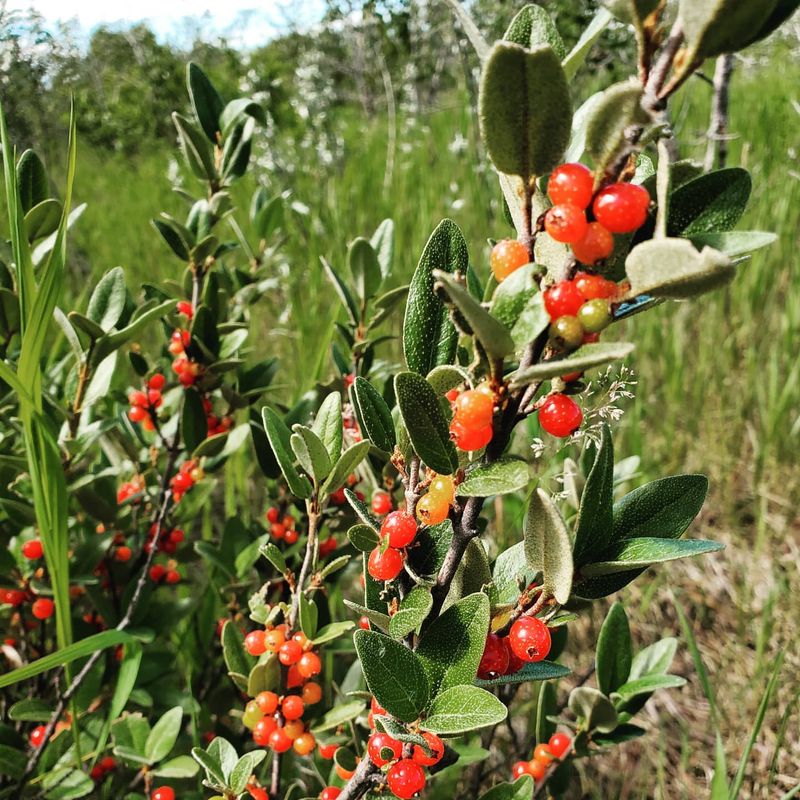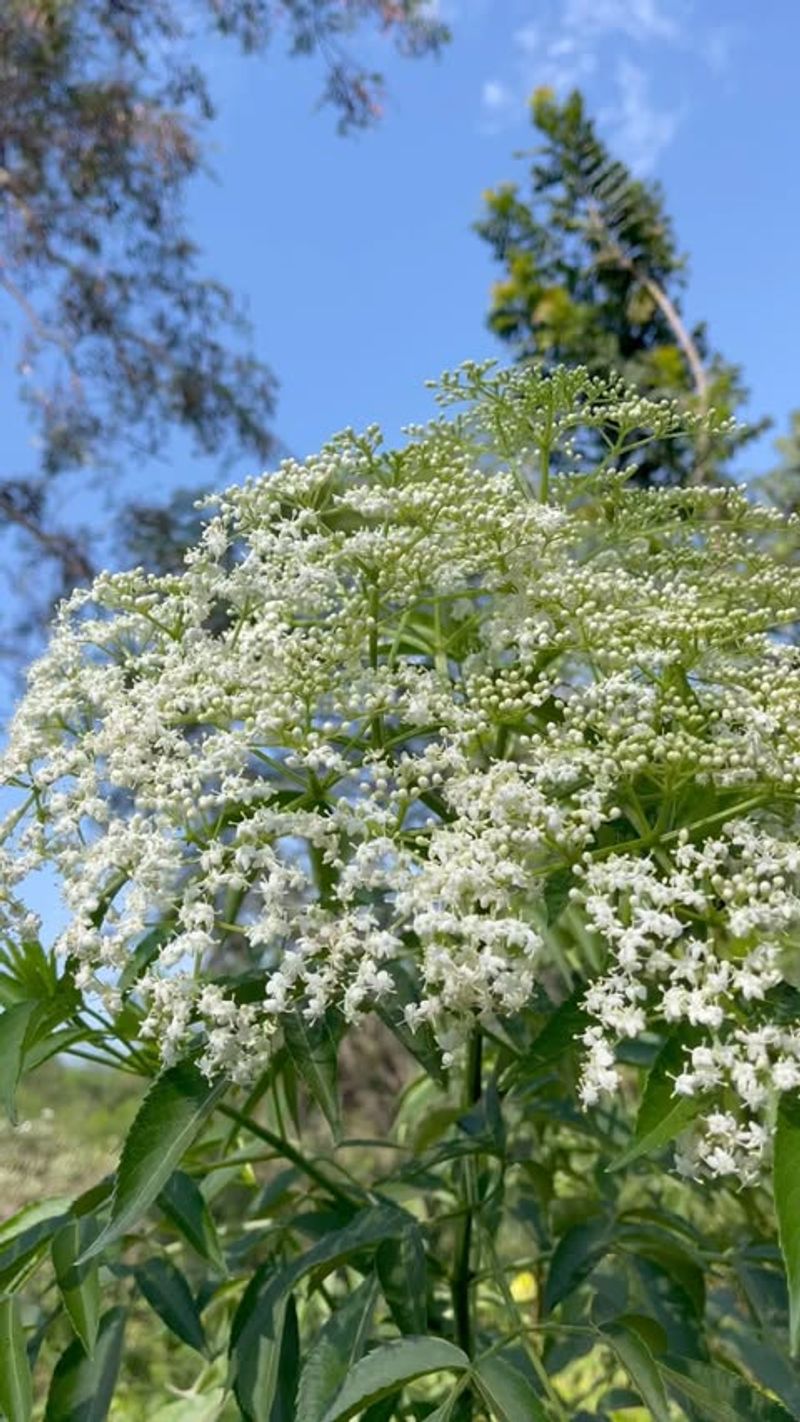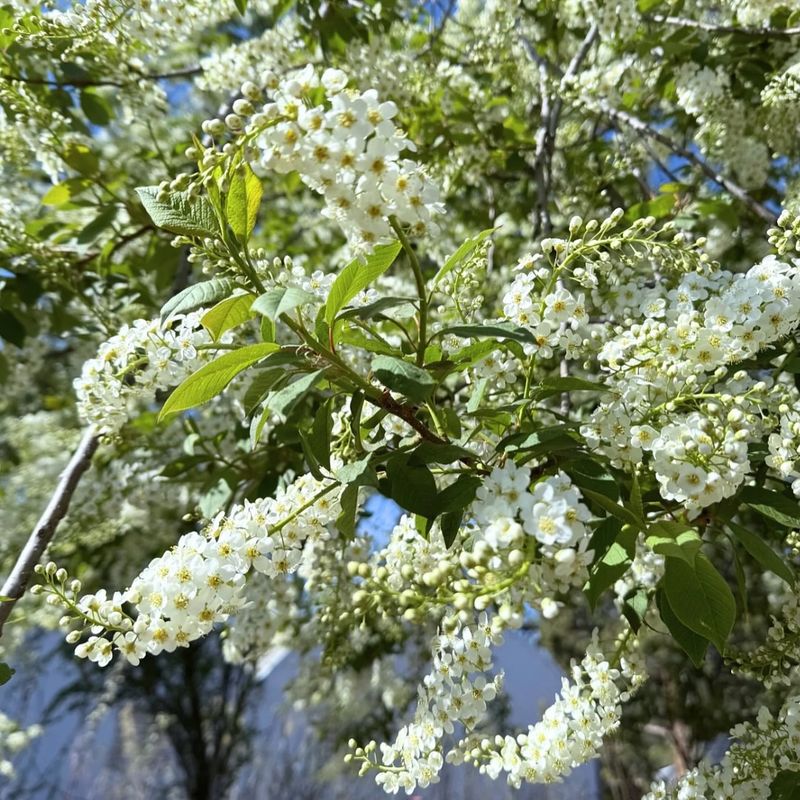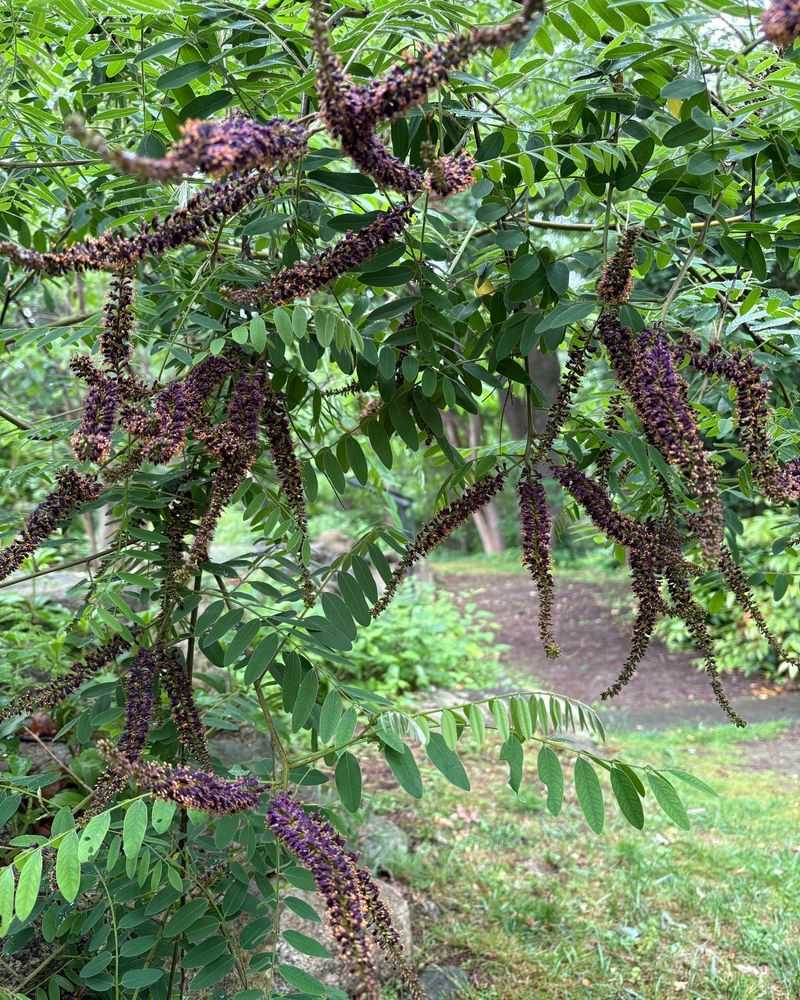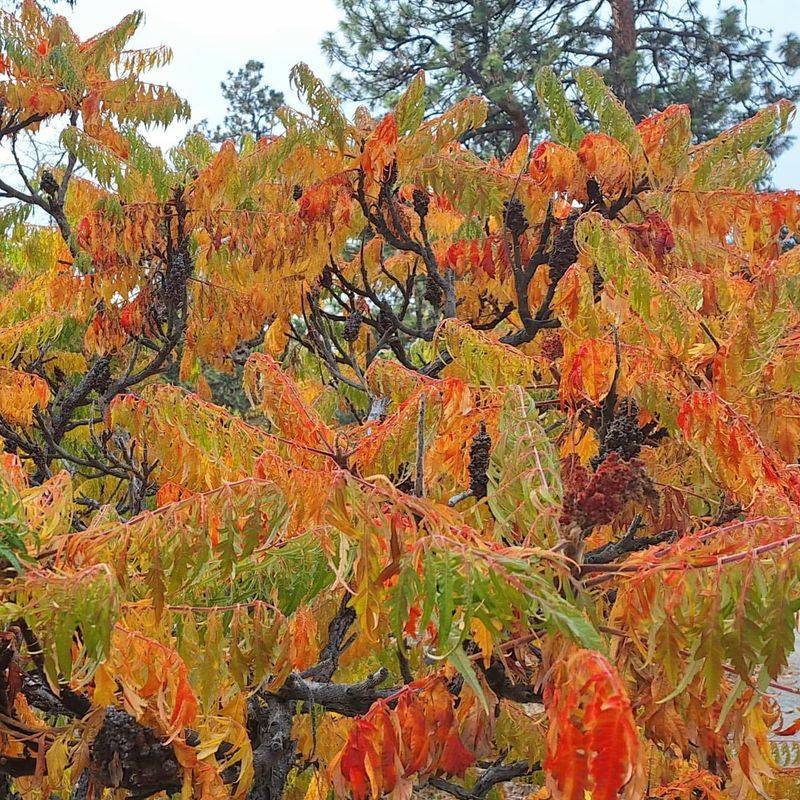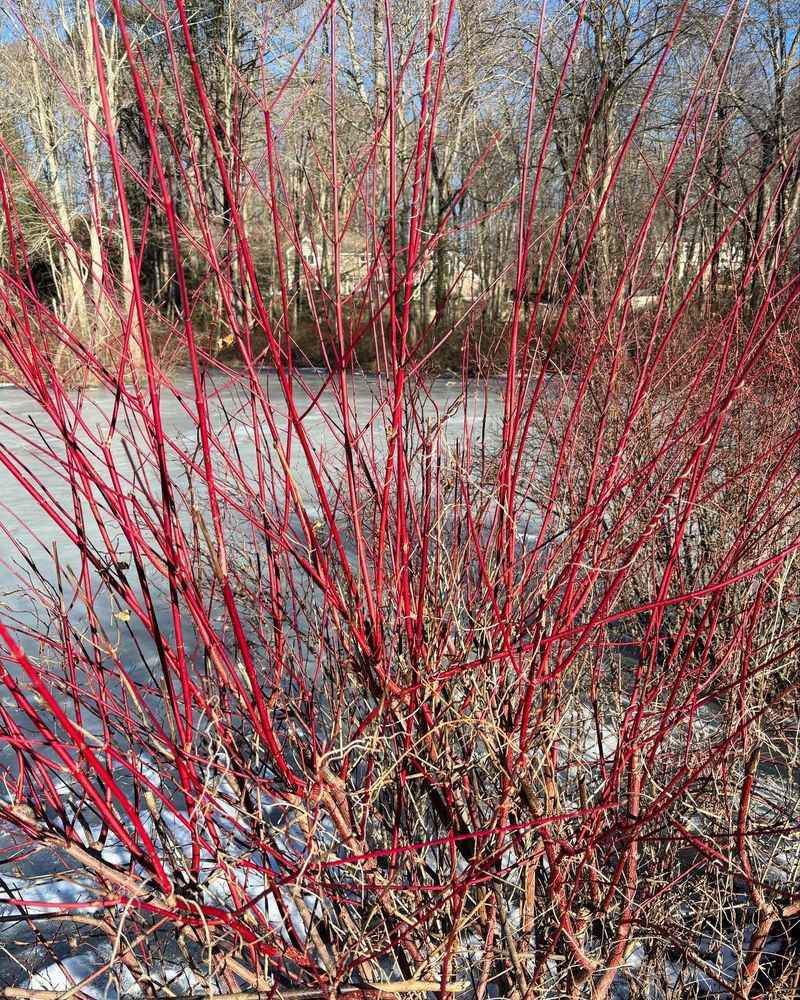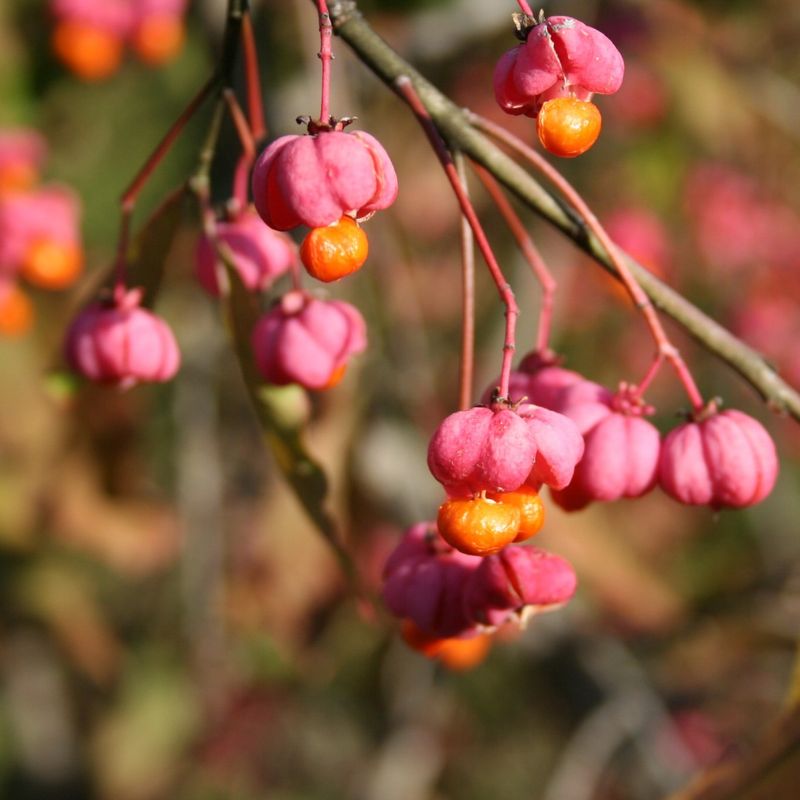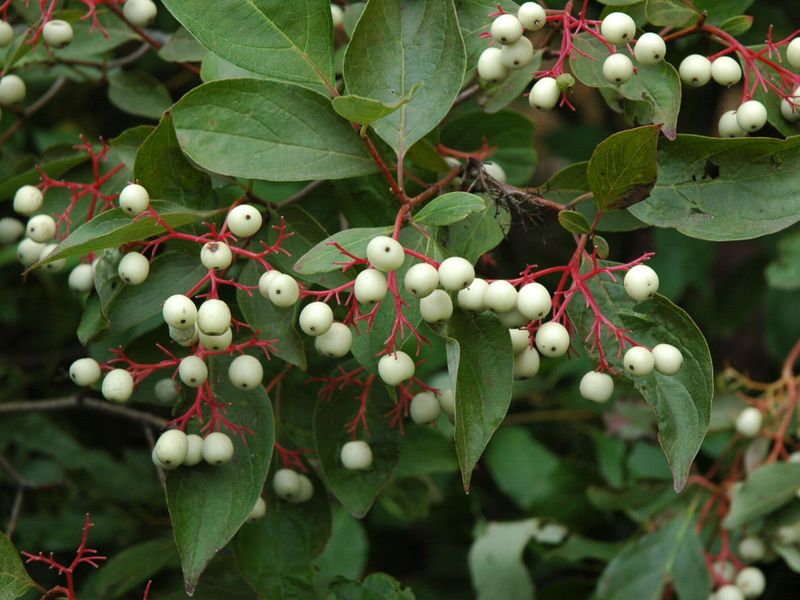Nebraska’s wild weather makes gardening tricky, but privacy and wildlife can go hand in hand. In my Omaha yard, shrubs turned a bare patio into a quiet retreat filled with cardinals and chickadees.
These plants offer berries, nesting spots, and shelter—plus they grow into natural screens with little upkeep. Perfect for our prairie climate.
Whether you’re near Lincoln or in Grand Island, bird-friendly shrubs thrive statewide. I’ve tested many, and a few stand out for privacy and bird appeal.
1. American Cranberrybush Viburnum
During Nebraska’s brutally hot summers, this native viburnum stands unfazed while creating dense coverage up to 12 feet tall. The white spring flowers attract pollinators before giving way to bright red berries that persist through winter.
Cardinals and cedar waxwings flock to feast on the fruit when snow covers the ground. I planted three along my north fence five years ago, and they’ve filled in beautifully despite our clay soil.
The fall foliage turns a stunning burgundy color, adding seasonal interest to your privacy screen. This shrub tolerates both wet periods and drought once established – perfect for Nebraska’s sometimes unpredictable rainfall patterns.
2. Serviceberry (Amelanchier)
Native to our region, serviceberry creates a spectacular spring show with delicate white blossoms appearing before most trees leaf out. By early summer, birds eagerly devour the sweet purple-blue berries while you enjoy the fruits too – they taste similar to blueberries!
My serviceberry hedge provides excellent screening at 8-10 feet tall while attracting over 40 bird species. The multi-stemmed growth habit creates natural density without heavy pruning.
Fall brings fiery orange-red foliage that rivals any ornamental in the landscape. Nebraska winters don’t phase this tough native, and its drought tolerance means less watering once established – a real win for conservation-minded gardeners.
3. Nanking Cherry
Early spring erupts with clouds of pale pink blossoms on this tough, adaptable shrub that robins and bluebirds absolutely adore. Growing 6-10 feet tall and equally wide, Nanking cherry creates an effective visual barrier while producing tart-sweet cherries perfect for homemade jams.
The dense branching pattern offers superior nesting sites for songbirds. In my Kearney garden, these shrubs have withstood everything Nebraska weather throws at them – from ice storms to 100-degree days.
Minimal maintenance makes this an ideal choice for busy homeowners. Simply plant several in a row about 4 feet apart, and within three years, you’ll have a living fence that serves both privacy and wildlife needs throughout all four seasons.
4. Red-Twig Dogwood
Winter interest becomes a standout feature with this native dogwood’s brilliant red stems creating a stunning display against Nebraska’s snowy backdrop. Growing 6-9 feet tall in just a few seasons, these shrubs form thickets that birds use for shelter and nesting.
Small white berries appear in summer, attracting over 40 bird species including thrushes and woodpeckers. The spreading nature makes it perfect for naturalizing along property lines where you need privacy quickly.
Tolerant of our occasionally soggy spring soils, red-twig dogwood thrives in both full sun and partial shade. I’ve planted a dozen along my western boundary, creating a living screen that glows with crimson intensity during our long winter months.
5. Arrowwood Viburnum
Songbirds practically line up for the blue-black berries this sturdy shrub produces in late summer. Growing 8-12 feet tall with similar spread, arrowwood viburnum creates an excellent year-round privacy solution that’s perfectly suited to Nebraska’s climate extremes.
White flower clusters emerge in May, attracting important pollinators. The dense, multi-stemmed growth habit provides excellent coverage without looking too formal or structured – perfect for natural-style landscapes.
One trick I’ve learned for Nebraska’s clay soils is adding compost at planting time. This native viburnum rewards minimal effort with maximum privacy and wildlife benefits, especially when planted in groups of three or more to ensure good berry production.
6. Common Ninebark
Tough-as-nails describes this Nebraska native perfectly! Common ninebark shrugs off our harsh continental climate while providing excellent screening up to 10 feet tall. The exfoliating bark adds winter interest when other shrubs look dormant.
Clusters of white or pink flowers in spring attract butterflies before developing into red seed capsules that birds pick clean. Last year, I added three ‘Diablo’ varieties with dramatic purple foliage along my driveway for instant privacy.
Adaptable to both wet and dry conditions, ninebark rarely needs supplemental watering once established – a huge plus during Nebraska’s occasional drought years. The arching branches create a naturally dense habit that requires minimal pruning to maintain your living privacy wall.
7. Winterberry Holly
Brilliant red berries persist through winter on this deciduous holly, creating a spectacular show against Nebraska’s snowy landscape. Unlike evergreen hollies, winterberry drops its leaves in fall, revealing thousands of colorful berries that cedar waxwings and robins devour.
Growing 6-8 feet tall and wide, this shrub creates effective privacy screens during the growing season. Remember to plant both male and female plants to ensure berry production – one male can pollinate up to five females.
Adaptable to both wet and average soils, winterberry performs beautifully in Nebraska gardens despite our sometimes challenging conditions. I’ve grouped five along my east property line, where they create seasonal privacy while providing crucial winter food for birds.
8. New Jersey Tea
Perfect for smaller Nebraska yards, this native shrub reaches just 3-4 feet tall but creates surprisingly effective privacy when planted in masses. The fragrant white flower clusters in early summer attract an astonishing variety of pollinators and beneficial insects.
Birds appreciate the dense, twiggy structure for nesting and protection from predators. Extremely drought-tolerant once established, New Jersey Tea thrives in Nebraska’s occasionally harsh conditions without supplemental irrigation.
Revolutionary War soldiers used the leaves as a tea substitute, hence the name. I’ve created a charming border around my patio using a dozen plants spaced 2 feet apart – they’ve filled in beautifully in just two seasons while attracting countless songbirds.
9. American Plum
Fragrant white blossoms blanket this native shrub in early spring, creating a breathtaking display that heralds the end of Nebraska’s long winter. Growing up to 15 feet tall with a thicket-forming habit, American plum quickly establishes an impenetrable privacy screen.
Small edible plums develop by late summer, attracting numerous bird species while also providing fruit for jams and jellies. The thorny branches offer superior protection for nesting birds against neighborhood cats and other predators.
Extremely adaptable to Nebraska’s variable soils and climate conditions, this native requires virtually no maintenance once established. I planted five bare-root saplings along my back property line seven years ago, and they’ve created a magnificent living fence that’s alive with bird activity.
10. Black Chokeberry
Reliable berry production makes this native shrub a bird magnet from late summer through fall. Growing 3-6 feet tall with an upright habit, black chokeberry creates effective privacy screens when planted in groups, especially in smaller Nebraska yards.
White spring flowers give way to clusters of dark purple-black berries that persist well into winter. The glossy green foliage transforms to spectacular red-purple in autumn, adding seasonal interest to your privacy hedge.
Remarkably adaptable to Nebraska’s occasionally waterlogged clay soils, this shrub also handles drought once established. My row of seven plants along the side yard provides moderate screening while attracting bluebirds, robins, and thrashers that feast on the abundant berries.
11. Buffaloberry
Nebraska pioneers relied on this native shrub’s tart red berries for making jellies during harsh prairie winters. Growing 6-10 feet tall with silvery foliage, buffaloberry creates striking privacy screens that stand out against greener landscape plants.
Birds enthusiastically strip the bright berries in late summer. The somewhat thorny nature of this shrub provides excellent nesting protection and deters unwanted human or animal traffic along property boundaries.
Incredibly drought-tolerant once established, buffaloberry thrives in Nebraska’s sometimes harsh western regions with minimal care. I’ve used a row of these tough natives to screen my vegetable garden from prevailing winds while providing habitat for numerous songbird species.
12. Common Elderberry
Massive white flower clusters attract beneficial insects to this fast-growing native shrub that quickly reaches 10-12 feet tall. By late summer, clusters of purple-black berries draw in countless bird species while also providing humans with berries for wines, syrups, and jams.
The compound leaves create a tropical effect in Nebraska landscapes, and the multi-stemmed growth habit forms effective privacy screens when planted in groups. Elderberry thrives in both average and wet soils, making it perfect for those occasionally soggy spots.
After a heavy pruning last spring, my elderberry hedge exploded with new growth, becoming even denser and more effective as a living privacy fence. The birds certainly appreciated the abundant berry crop that followed – I counted seven species feeding at once!
13. Chokecherry
Nebraska’s state soil – Holdrege – seems tailor-made for this native shrub that grows 10-20 feet tall with an upright, tree-like habit. Fragrant white flower racemes in spring give way to dark purple fruits that birds absolutely devour while also making excellent jellies and syrups.
The dense branching pattern creates effective privacy screening, especially when planted in groups. Fall brings attractive yellow foliage that stands out in the landscape.
Extremely cold-hardy and drought-tolerant once established, chokecherry handles Nebraska’s climate extremes with ease. I’ve created a mixed native hedge featuring several chokecherries, and they’ve quickly become the backbone of my privacy screen while attracting numerous bird species.
14. False Indigo (Amorpha fruticosa)
Purple-blue flower spikes create a spectacular late spring display on this native shrub that reaches 6-10 feet tall with an open, airy habit. The compound leaves resemble a small locust tree, creating a feathery texture that softens harsh landscape lines.
Goldfinches and other small birds particularly appreciate the seed pods and dense branching for nesting. Extremely drought-tolerant once established, false indigo thrives in Nebraska’s occasionally challenging growing conditions with minimal care.
For the best privacy screening, I’ve found planting in groups of five or more creates the most effective barrier. My false indigo hedge along the west property line has withstood everything Nebraska weather has thrown at it while providing crucial habitat for numerous bird species.
15. Staghorn Sumac
Fall color becomes a neighborhood showstopper with this native shrub’s brilliant red-orange foliage. Growing 10-15 feet tall with a distinctive spreading habit, staghorn sumac quickly creates effective privacy screens along property lines while tolerating Nebraska’s occasionally poor soils.
Red fruit clusters persist through winter, providing crucial food for birds when other sources are scarce. The velvety branches resemble deer antlers in velvet – hence the name “staghorn.”
Extremely drought-tolerant once established, this native spreads by suckers to form colonies – perfect for naturalizing larger areas. I’ve used sumac to screen my backyard from the street, creating a bird-friendly buffer that explodes with color each fall.
16. Red Osier Dogwood
Brilliant red stems provide stunning winter interest when this native shrub drops its leaves, revealing a fiery display against Nebraska’s snowy landscape. Growing 6-9 feet tall with a spreading habit, red osier dogwood creates effective privacy screens that look spectacular year-round.
White berries appear in summer, attracting numerous bird species. Unlike its cousin red-twig dogwood, this variety maintains a more compact form that’s perfect for smaller properties.
Tolerant of both wet soils and occasional drought, this adaptable native performs beautifully across Nebraska’s diverse growing conditions. I’ve planted a zigzag row along my property line, creating a natural-looking screen that provides both privacy and crucial wildlife habitat.
17. Eastern Wahoo
Spectacular fall color and unusual pink-purple fruit capsules make this Nebraska native a standout in any privacy planting. Growing 10-15 feet tall with a tree-like habit, Eastern wahoo creates effective screening while providing unique ornamental features throughout the seasons.
Birds eagerly consume the colorful fruits, which resemble tiny hot-air balloons before splitting open. The red-purple fall foliage rivals burning bush but without the invasive tendencies – perfect for conservation-minded Nebraska gardeners.
Extremely adaptable to both wet and dry conditions once established, Eastern wahoo handles Nebraska’s sometimes unpredictable climate with ease. My specimen planted five years ago has already reached 12 feet tall, providing excellent privacy while attracting numerous bird species.
18. Gray Dogwood
White berries on striking red stems create a beautiful contrast on this native shrub that grows 10-15 feet tall with a rounded habit. Gray dogwood forms thickets naturally, making it perfect for privacy screens along property lines while providing crucial nesting habitat for birds.
The creamy white flower clusters in late spring attract numerous pollinators. Unlike some dogwoods, this species handles Nebraska’s occasionally dry conditions with remarkable resilience once established.
For maximum privacy and wildlife benefits, I’ve found planting in groups of seven or more creates the most effective living fence. My gray dogwood thicket along the north boundary has become a bird sanctuary, hosting everything from cardinals to catbirds throughout the seasons.

